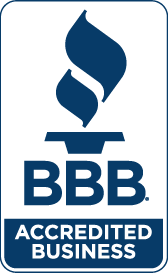Navigating the Complexities of Section 363 Bankruptcy Sales

I recently presented “Navigating the Complexities of Section 363 Bankruptcy Sales” for National Business Institute, which you can now watch OnDemand. At the
risk of sounding like the “My Pillow Guy”, use promo code FPDN50A at checkout to receive $50 off your purchase.
Check it out at https://www.nbi-sems.com/ProductDetails/96312SVDM!
Here’s an excerpt from the presentation.
There are three (3) possible conclusions to a Chapter 11 bankruptcy.
First, debtor and creditors may negotiate a plan to govern the distribution of the estate’s value. See, e.g., 11 U. S. C. §§1121, 1123, 1129, 1141.
Second, the bankruptcy court may convert the case to Chapter 7 for liquidation of the business and distribution of its assets to creditors. §§1112(a), (b), 726.
Finally, the bankruptcy court may dismiss the case. §1112(b). A court ordering a dismissal ordinarily attempts to restore the prepetition financial status quo. §349(b)(3). Yet if perfect restoration proves difficult or impossible, the court may, “for cause,” alter the dismissal’s normal restorative consequences, §349(b)—i.e., it may order a “structured dismissal.”
The Bankruptcy Code also establishes basic priority rules for determining the order in which the court will distribute an estate’s assets. The Code makes clear that distributions in a Chapter 7 liquidation must follow this prescribed order, §§725, 726.
Chapter 11 permits some flexibility but a court still cannot confirm a plan that contains priority-violating distributions over the objection of an impaired creditor class. §§1129(a)(7), (b)(2). The Code does not explicitly state what priority rules—if any—apply to the distribution of assets in a structured dismissal. See, CZYZEWSKI v. JEVIC HOLDING CORP, 787 F. 3d 173, No. 15–649. USSC, Argued December 7, 2016—Decided March 22, 2017.
Can a bankruptcy court approve a structured dismissal that provides for distributions that do not follow ordinary priority rules without the affected creditors’ consent? The Supreme Court’s answer to this simple question in In re Jevic was, “no.” The Court concluded that Congress did not authorize a “rare case” exception. We cannot “alter the balance struck by the statute,” Law v. Siegel, 571 U. S. 415, 419 (2014) (slip op., at 11), not even in “rare cases.” Cf. Norwest Bank Worthington v. Ahlers, 485 U. S. 197, 207 (1988) (explaining that courts cannot deviate from the procedures “specified by the Code,” even when they sincerely “believ[e] that . . . creditors would be better off”). A bankruptcy court has statutory authority to “issue any order, process, or judgment that is necessary or appropriate to carry out the provisions of” the Bankruptcy Code. 11 U. S. C. §105(a). And it may also possess “inherent power . . . to sanction ‘abusive litigation practices.’” Marrama v. Citizens Bank of Mass., 549 U. S. 365, 375–376 (2007). But in exercising those statutory and inherent powers, a bankruptcy court may not contravene specific statutory provisions.
It is hornbook law that §105(a) “does not allow the bankruptcy court to override explicit mandates of other sections of the Bankruptcy Code.” 2 Collier on Bankruptcy ¶105.01[2], p. 105–6 (16th ed. 2013). Section 105(a) confers authority to “carry out” the provisions of the Code but it is quite impossible to do that by taking action that the Code prohibits. A transaction entered into in a bankruptcy case that acts as a de facto Chapter 11 plan of reorganization and evades or subverts the requirements of the Bankruptcy Code, including those for plan confirmation and the absolute priority rule. The bankruptcy court may determine that a bankruptcy transaction, normally part of a standard bankruptcy case, constitutes a sub rosa plan, including, but not limited to:
- A section 363 sale.
- A 9019-settlement agreement.
- A lock-up or plan support agreement.
- A rights offering.
- A DIP financing agreement.
The §363 process ordinarily involves a chapter 11 debtor as the seller and a prospective buyer presenting a fully negotiated asset purchase agreement (APA) to the bankruptcy court for approval. This APA then becomes the template against which other potential buyers bid in an auction, pursuant to a set of court-approved procedures referenced below. Once a winning bidder is selected, the transaction closes with the sale being free and clear of prior liens and most claims, including claims by creditors that have not been paid at the time of the sale.





